The ocean is home to some of the most graceful creatures on Earth. Marine mammals glide effortlessly through its depths, showcasing their beauty and power. Let’s dive in and explore some of the most remarkable marine mammals that glide through the world’s waters.
Blue Whale
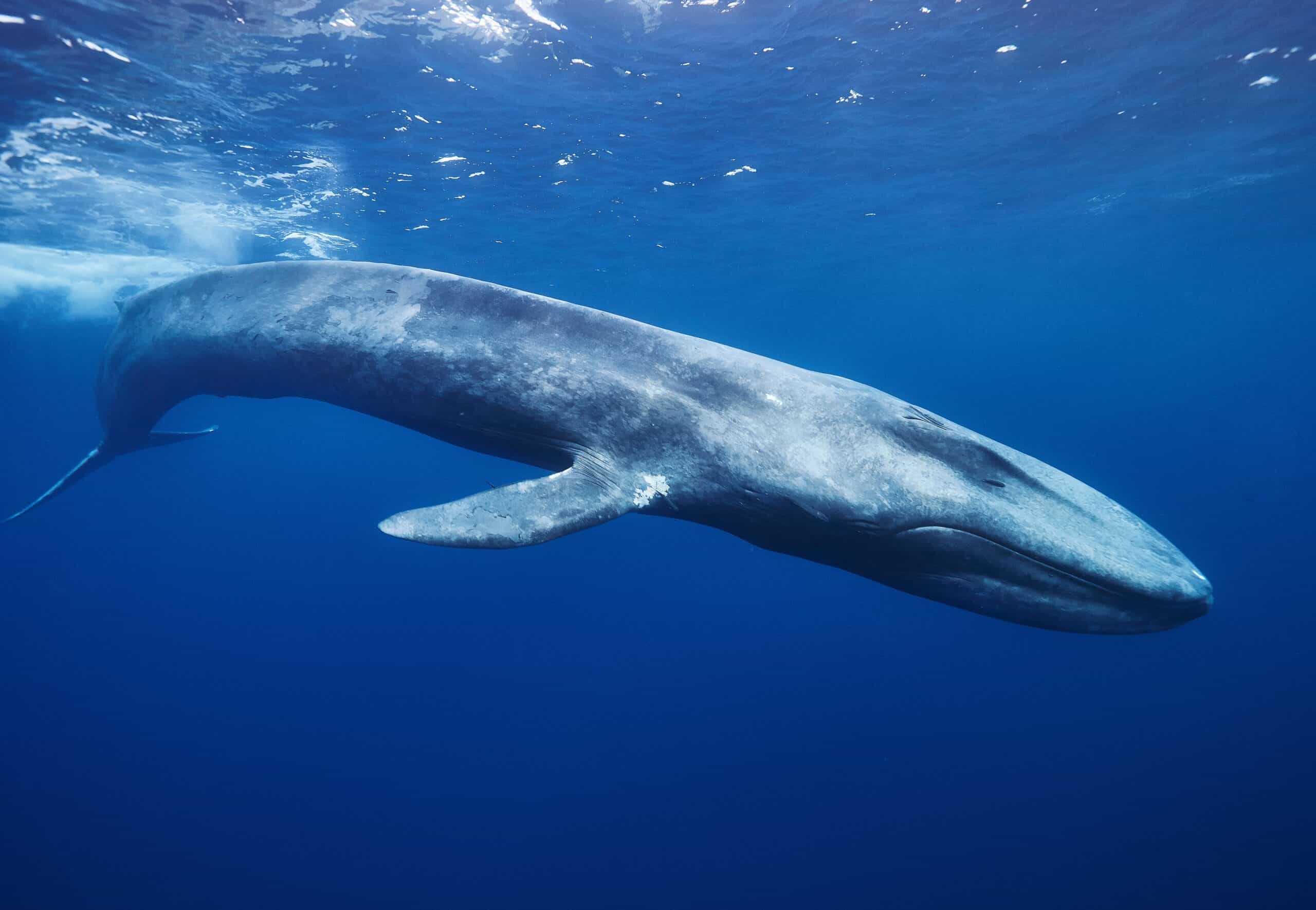
The blue whale is the largest animal on the planet. It can grow up to 100 feet long and weigh nearly 200 tons. Despite its size, this gentle giant glides gracefully through the ocean. Its streamlined body helps it move efficiently as it filters krill, its primary food, from the water. Blue whales also have a unique blue-gray hue, which is breathtaking when seen underwater.
Humpback Whale
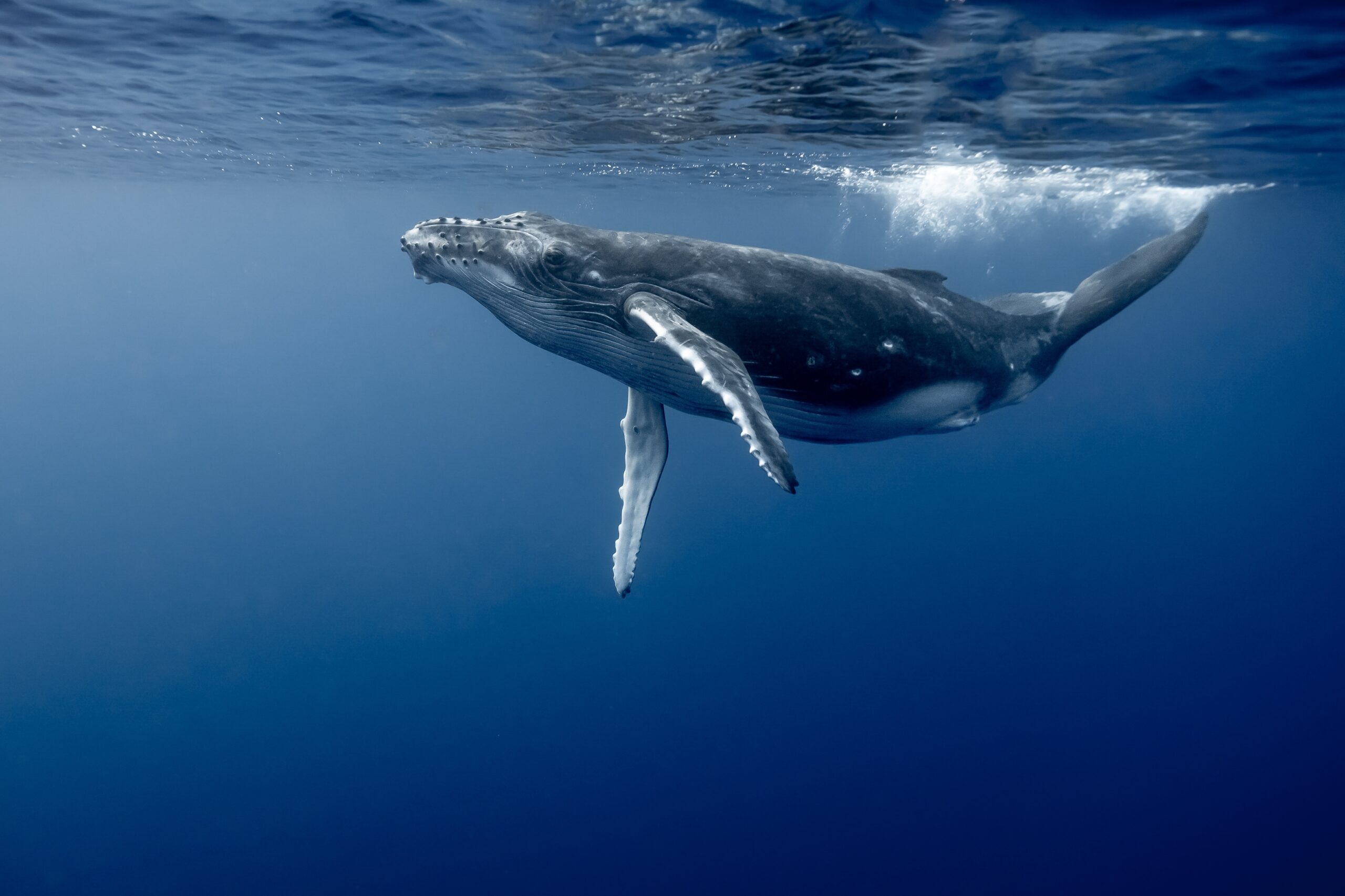
Humpback whales are known for their acrobatic displays. They breach the water with powerful leaps, creating awe-inspiring moments. These whales also sing complex songs that travel vast distances underwater. Their long pectoral fins help them maneuver gracefully through the water. Humpbacks migrate thousands of miles annually, making them true travelers of the seas.
Orca (Killer Whale)
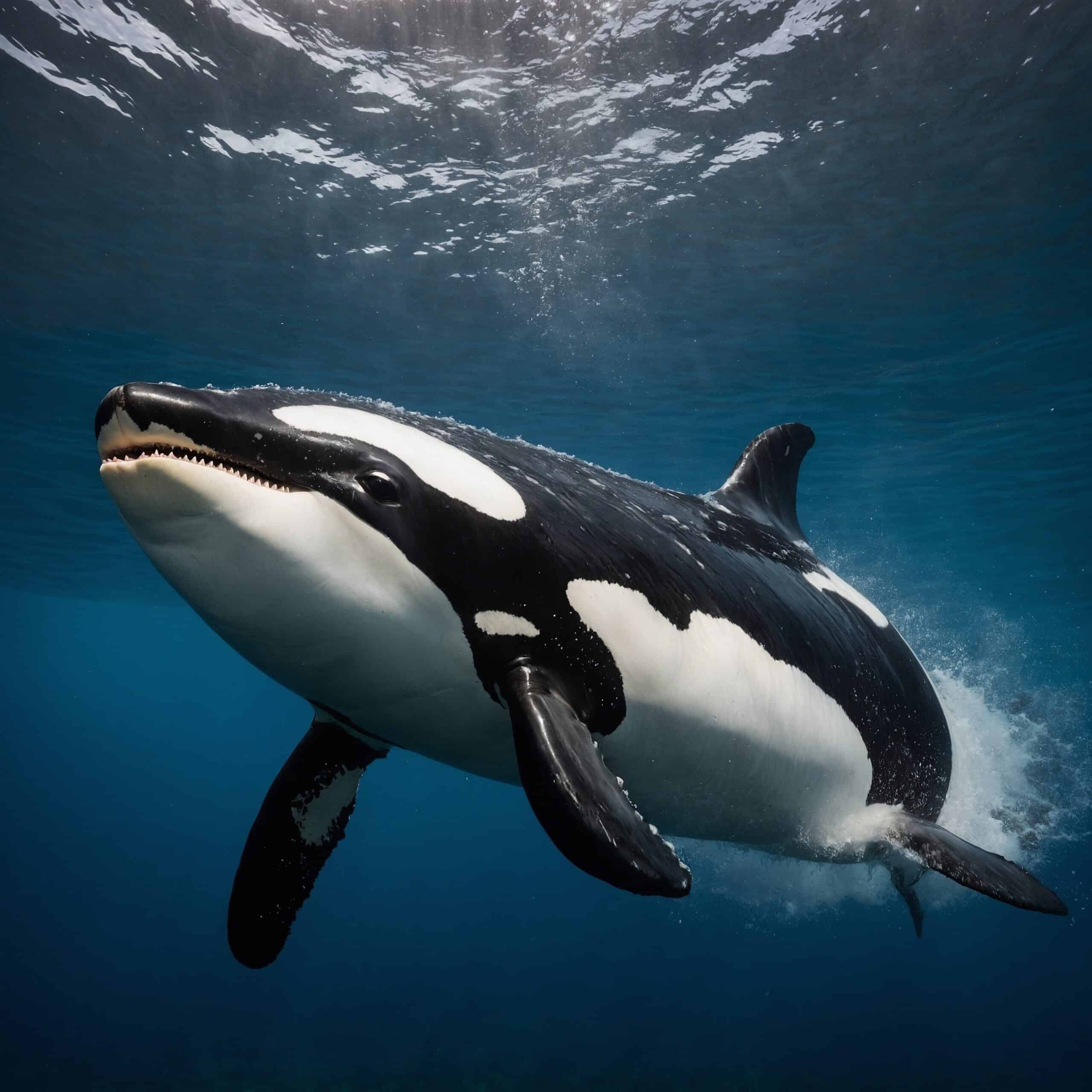
Orcas are apex predators that command respect in the ocean. Their black and white coloring makes them instantly recognizable. These intelligent animals hunt in packs, using complex communication and coordination. Orcas can swim at high speeds, chasing down prey like seals and fish. Their sleek bodies allow them to cut through the water effortlessly, making them efficient hunters.
Narwhal
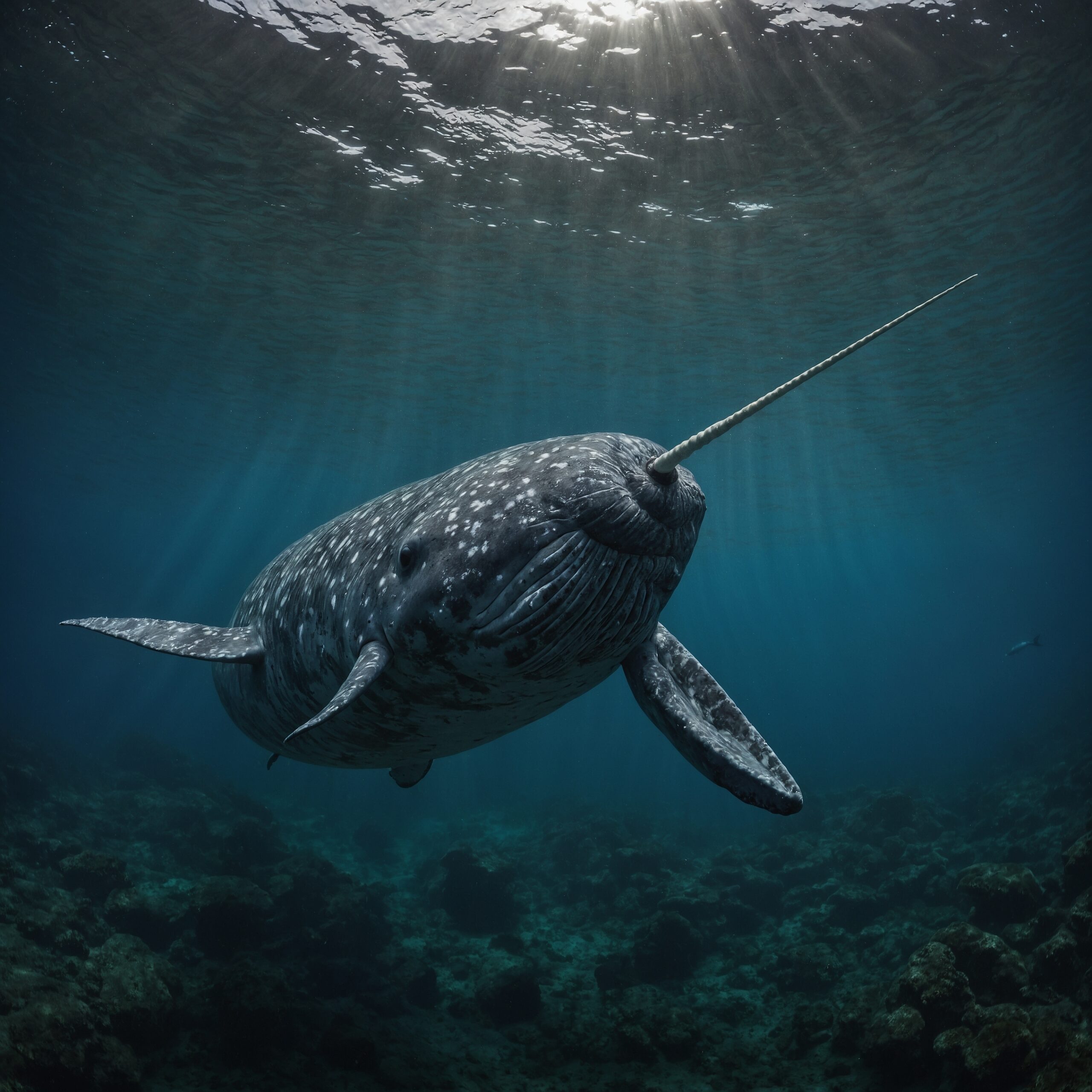
Narwhals are often called the “unicorns of the sea” due to their long, spiraled tusk. This tusk is actually an elongated tooth, growing up to 10 feet long in males. Narwhals live in the Arctic, gliding through cold, icy waters. Their movements are smooth and agile as they dive deep in search of fish and squid. The narwhal’s ability to thrive in such harsh environments is remarkable.
Beluga Whale
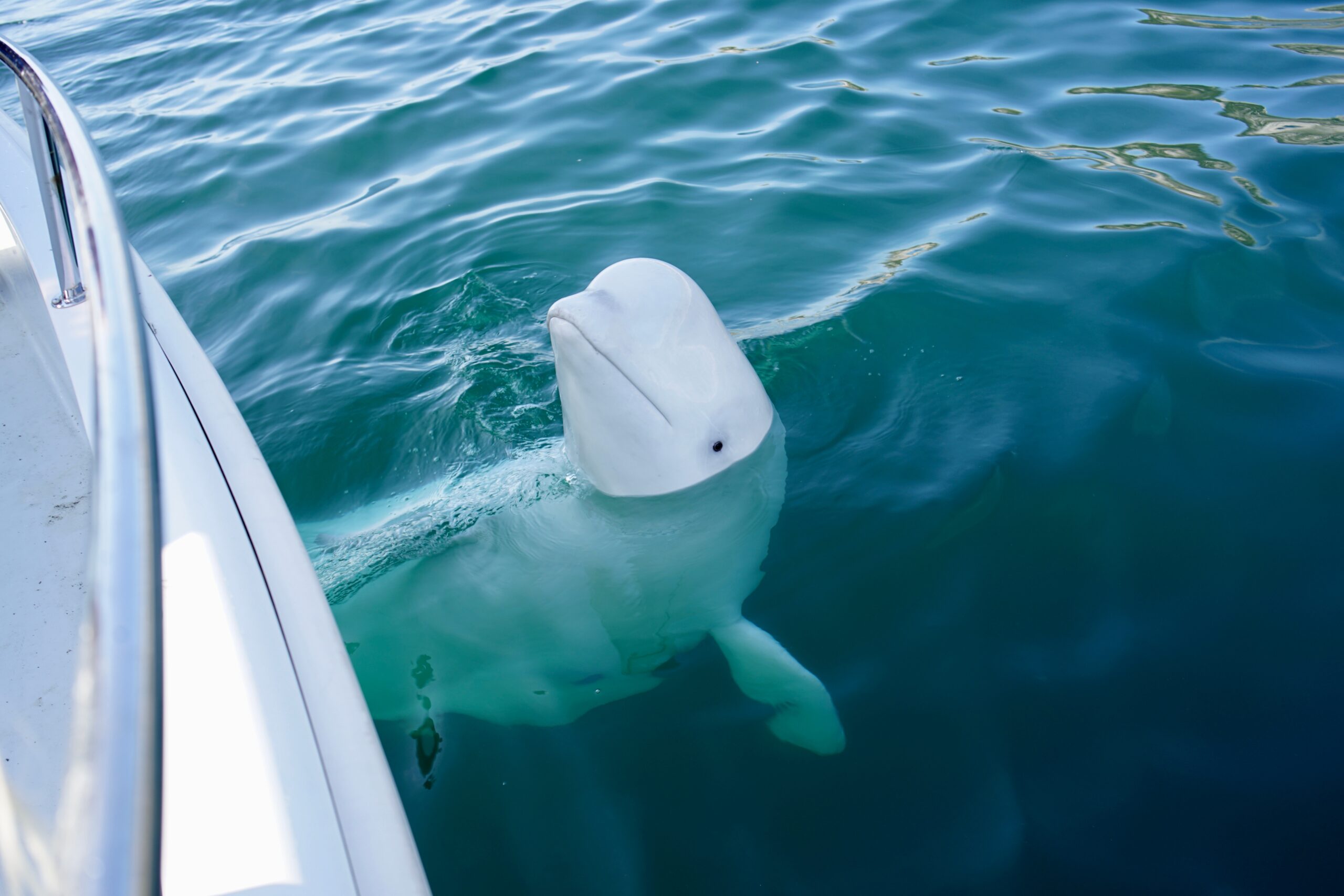
Belugas are known for their all-white appearance and expressive faces. These social whales are often seen swimming in pods. Their rounded heads, called melons, help them use echolocation to navigate through the dark waters of the Arctic. Belugas are also highly vocal, earning them the nickname “canaries of the sea.” Their smaller size allows them to glide easily through narrow ice-covered waterways.
Sperm Whale
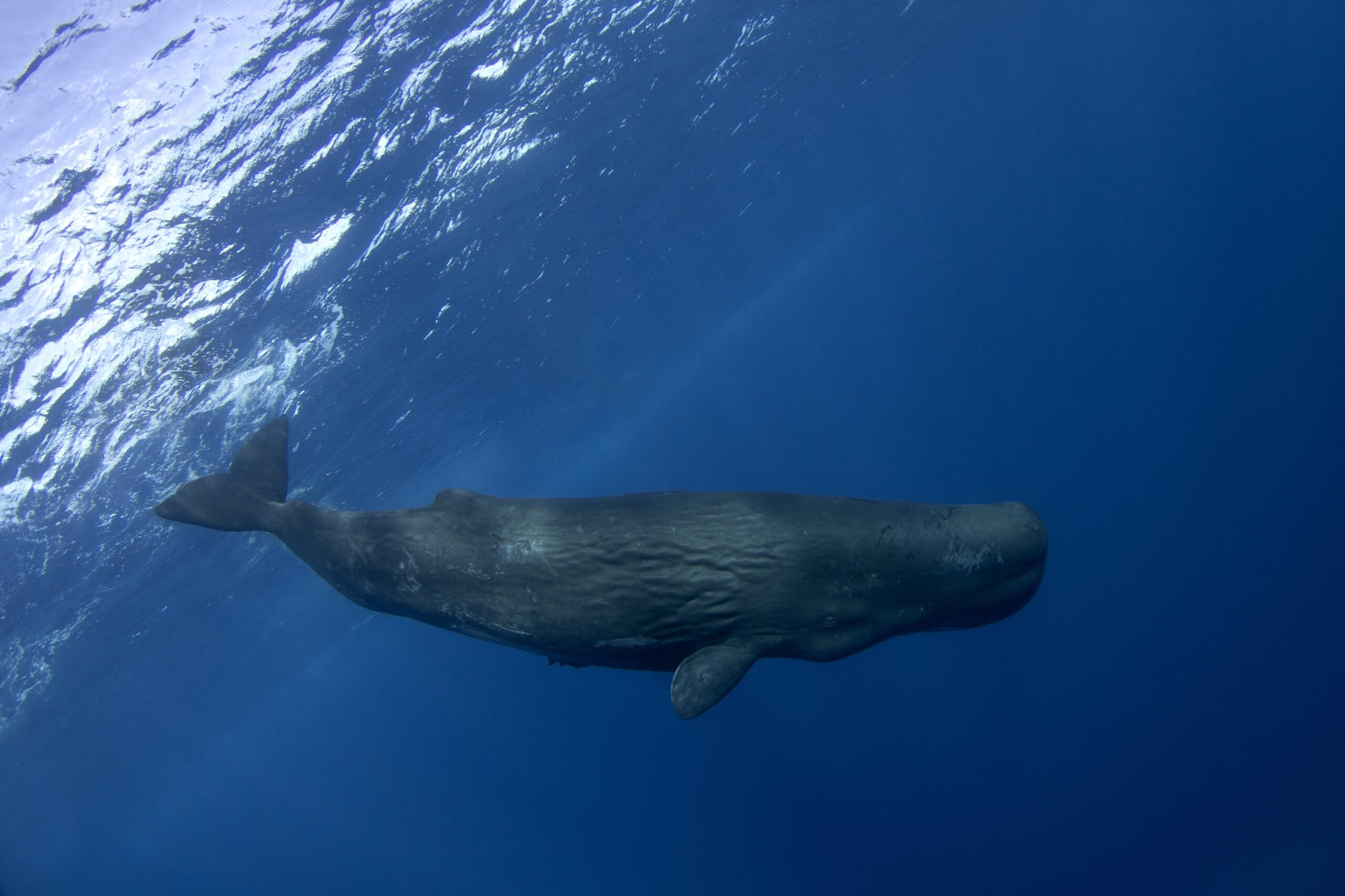
The sperm whale has a massive, block-shaped head that houses the largest brain of any animal. It can dive to incredible depths, reaching over 7,000 feet in search of giant squid. Sperm whales are powerful swimmers, using their tail flukes to propel themselves through the water. Their echolocation skills are finely tuned, allowing them to navigate the ocean’s depths with ease. They spend much of their time in deep waters, far from shore.
Minke Whale
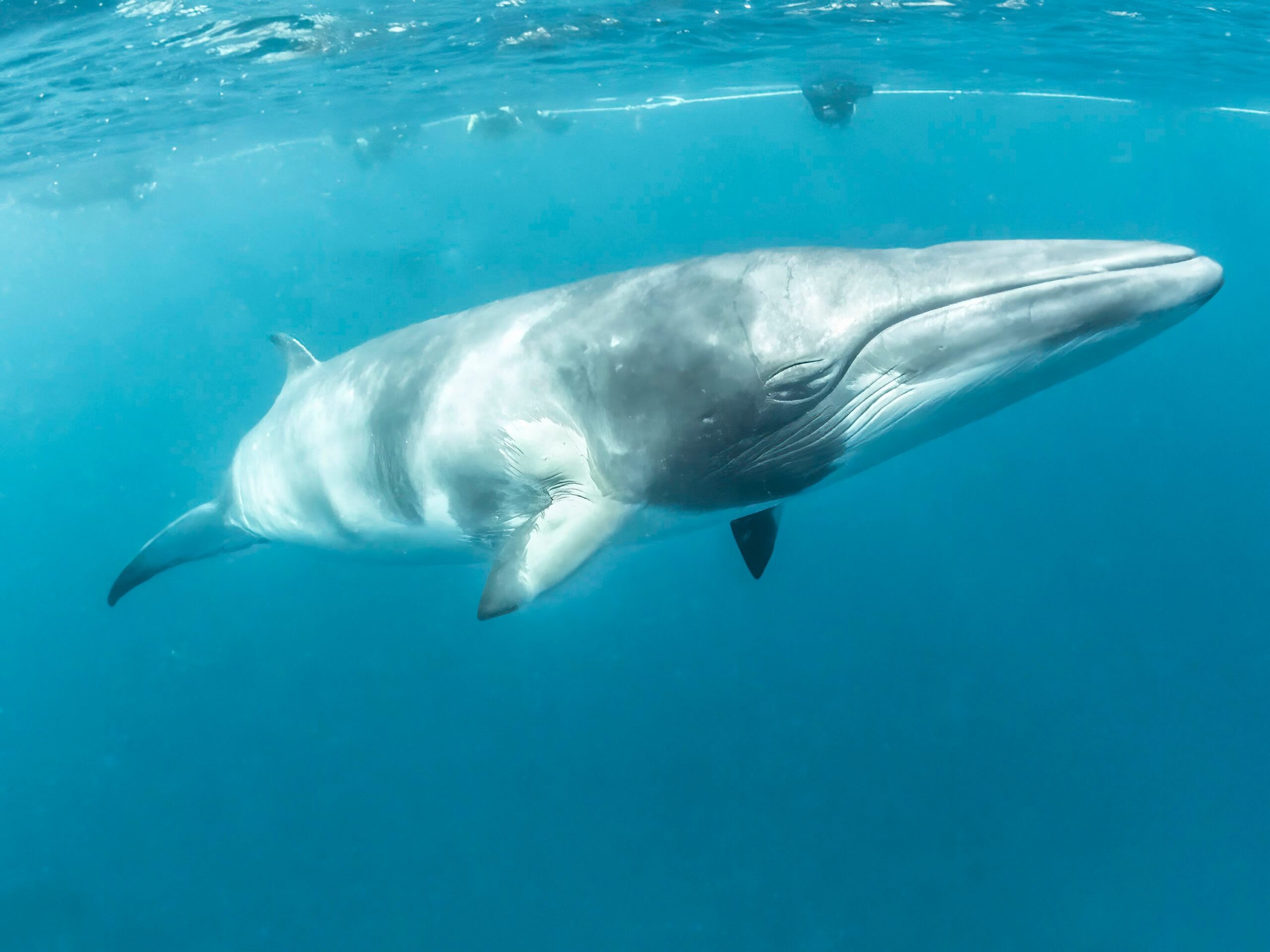
Minke whales are among the smallest of the baleen whales, but they are quick and agile. They can reach speeds of up to 25 miles per hour, darting through the water with ease. Minke whales have a sleek, streamlined body that helps them swim efficiently. They feed on small fish and plankton, using their baleen plates to filter food from the water. These whales are often spotted alone or in small groups.
Fin Whale
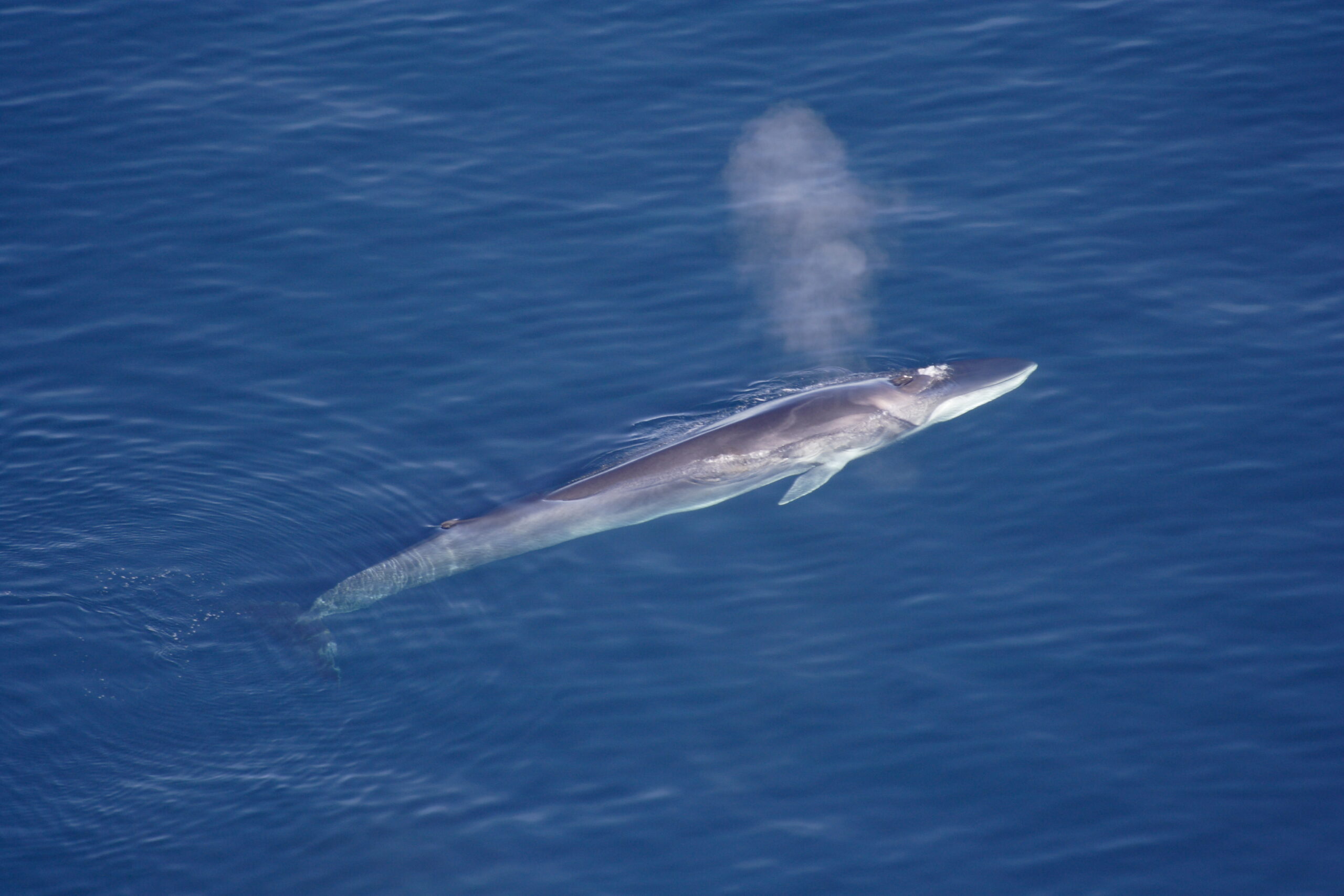
Fin whales are second only to the blue whale in size. They can grow up to 85 feet long but remain incredibly graceful swimmers. Fin whales are known for their fast, powerful movements, earning them the nickname “greyhounds of the sea.” Their asymmetrical coloring—dark on the left side and light on the right—sets them apart from other whales. They glide effortlessly through deep waters, often diving to great depths in search of food.
Gray Whale
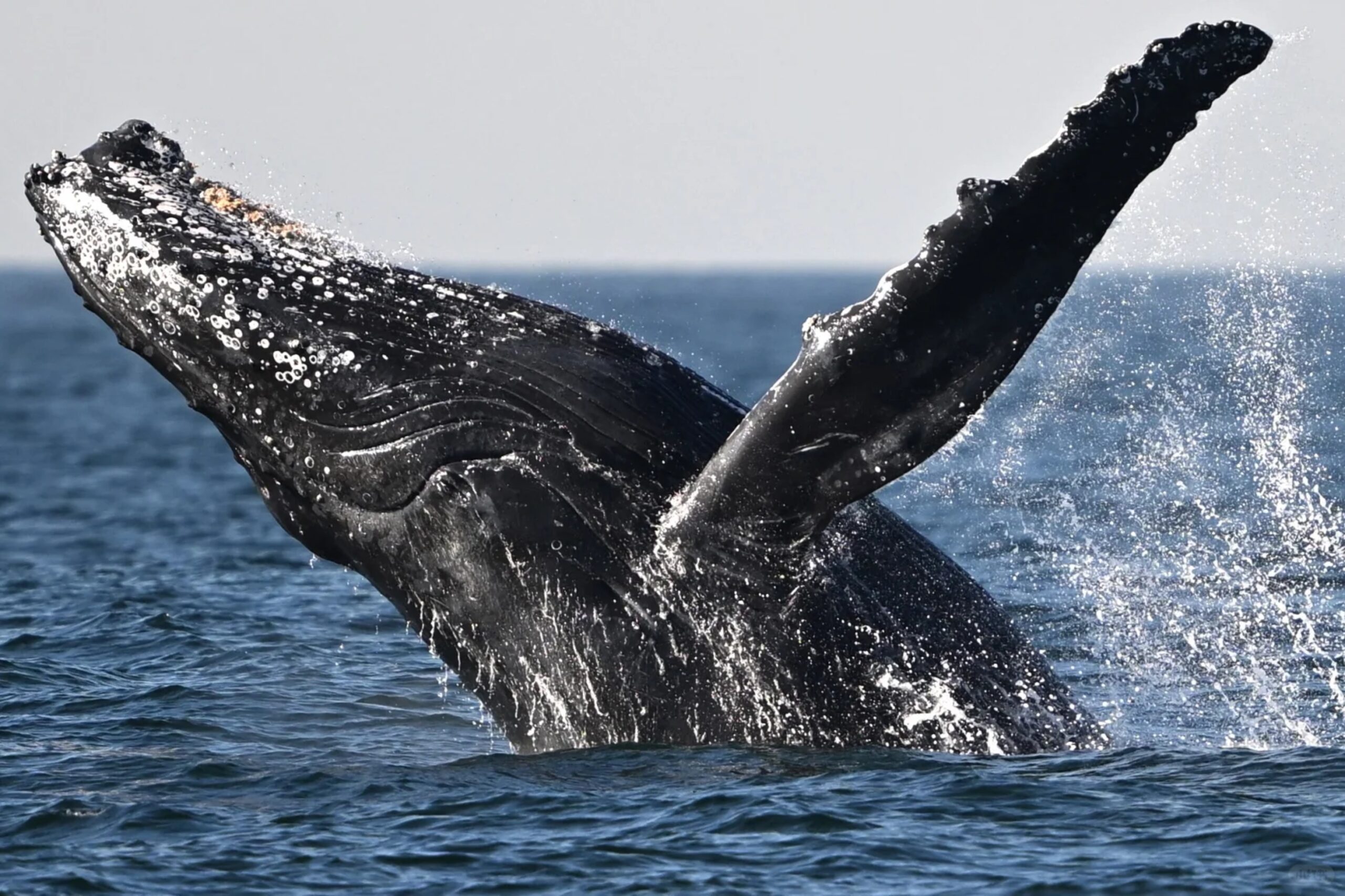
The gray whale is known for its long migrations. It travels over 10,000 miles each year from feeding grounds to breeding waters. Its mottled gray skin, covered with barnacles, gives it a rugged appearance. Despite this, the gray whale moves gracefully through coastal waters. It often feeds by diving to the seafloor, filtering small crustaceans from the mud.
Bowhead Whale
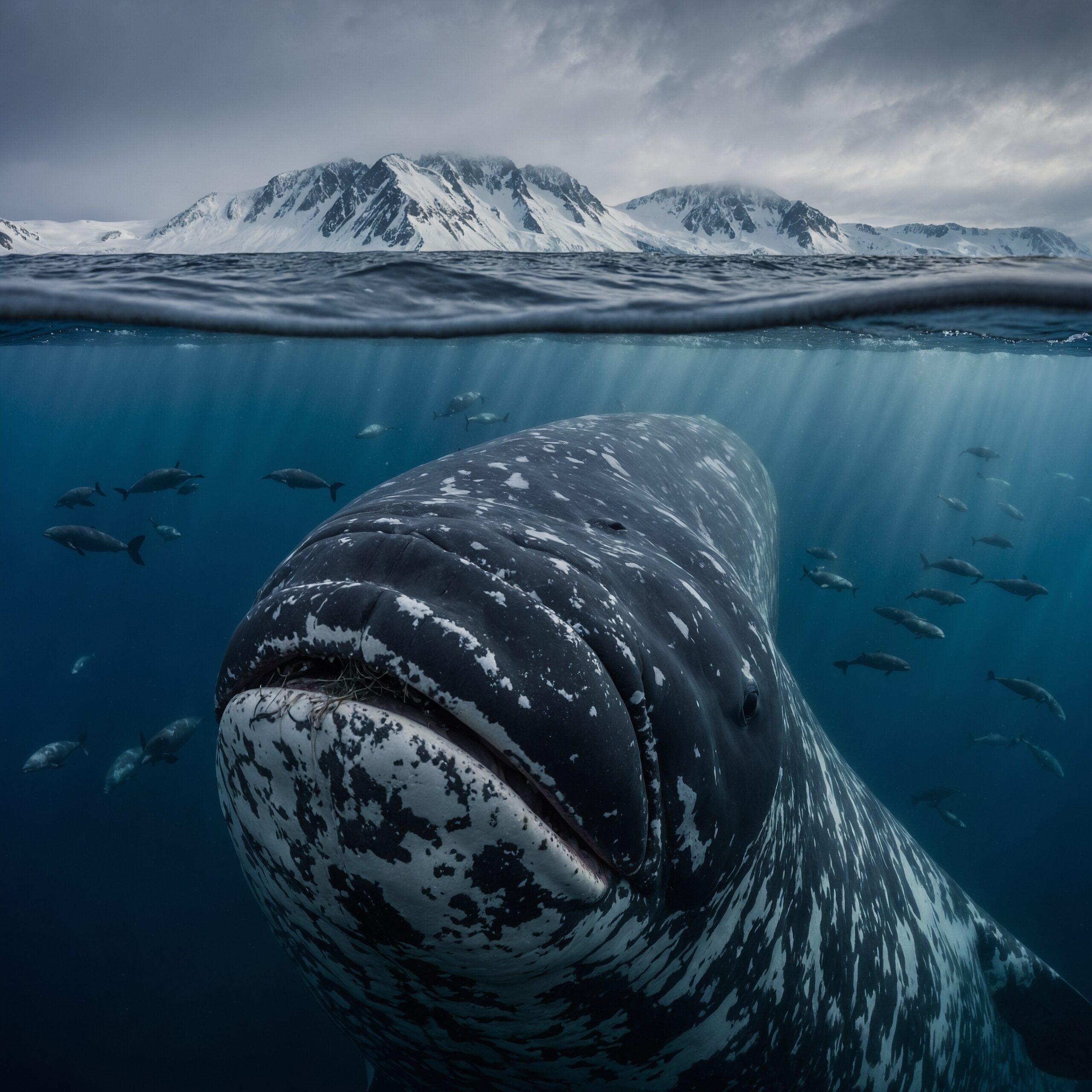
The bowhead whale is perfectly adapted to life in icy Arctic waters. Its massive skull helps it break through thick sea ice. This whale can live over 200 years, making it one of the longest-living mammals. Bowheads swim slowly but powerfully, gliding effortlessly through frigid waters. Their thick blubber insulates them from extreme cold.
Southern Right Whale
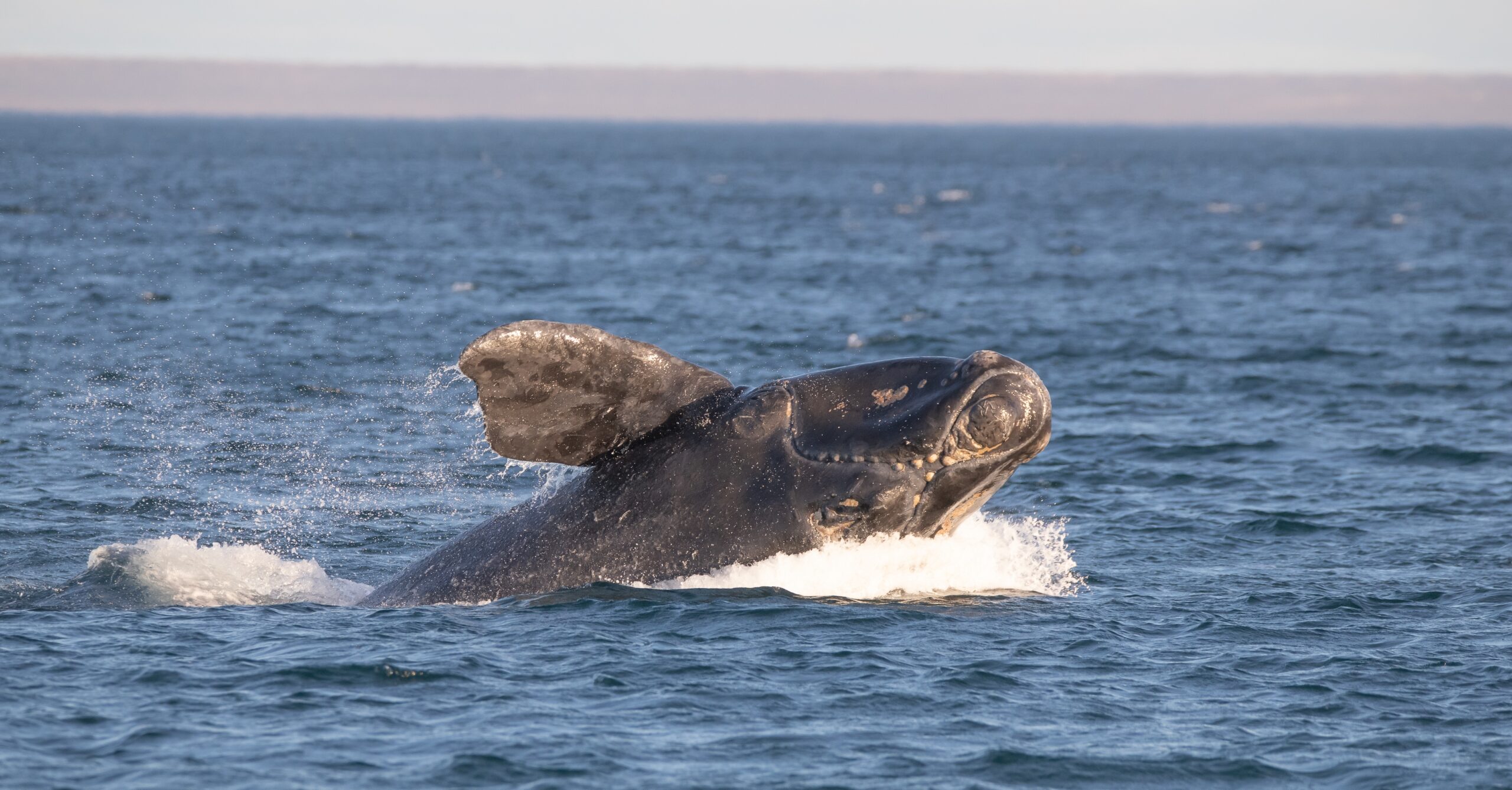
Southern right whales are gentle giants of the southern oceans. They are known for their large, calloused heads, which are covered in distinctive patches of rough skin. These whales are slow swimmers but move with grace as they rise to the surface to breathe. Their smooth, arched bodies allow them to navigate with ease in open waters. Southern right whales are often seen breaching and tail-slapping.
Northern Right Whale
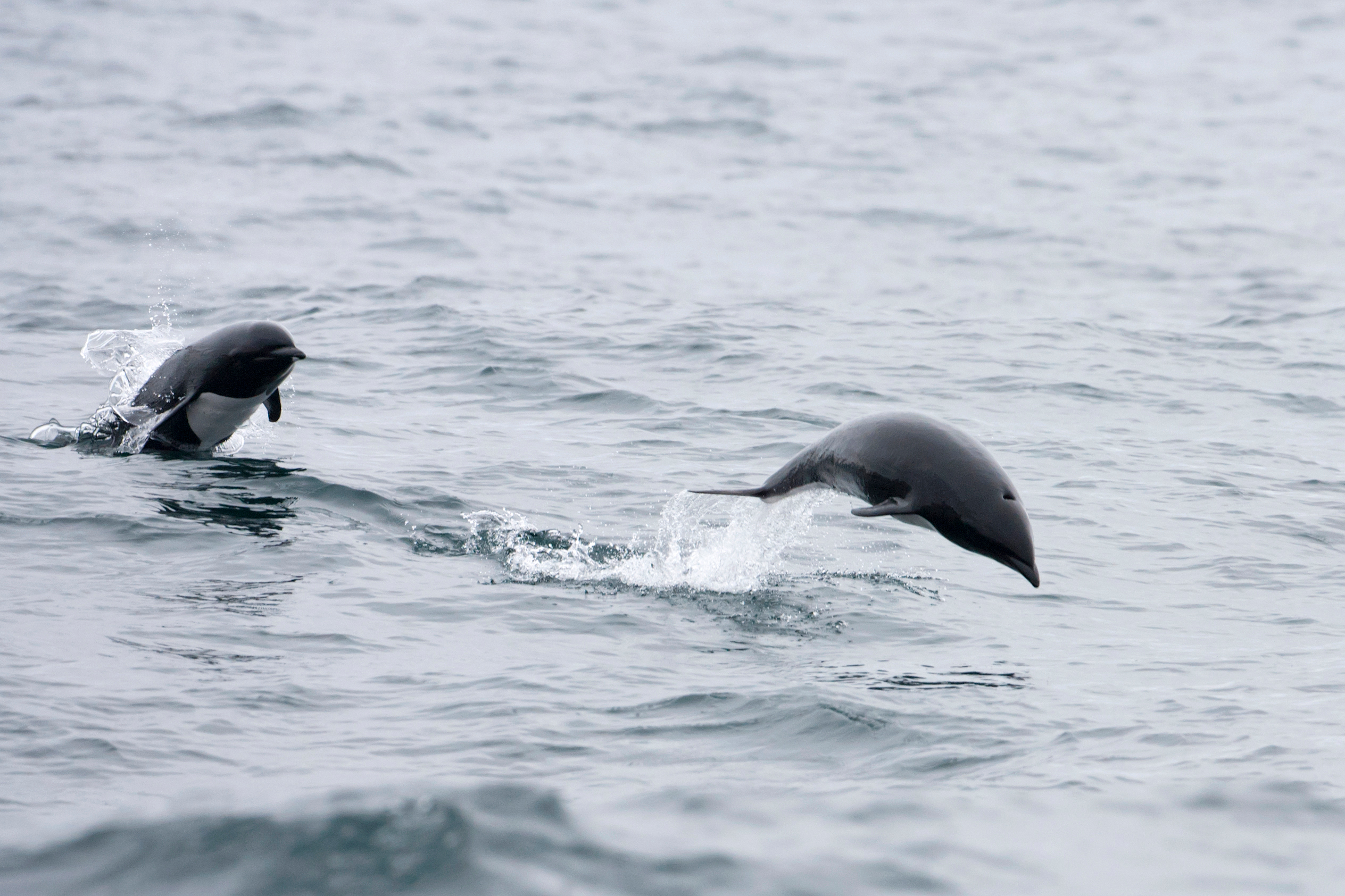
The northern right whale is critically endangered, with only a few hundred individuals left. Despite its large size, this whale glides slowly through the ocean, often near the surface. Northern right whales have broad, paddle-like flippers that help them steer effortlessly. Their thick bodies are buoyant, allowing them to float easily between dives. These whales are often spotted in coastal waters, feeding on tiny zooplankton.
Bryde’s Whale
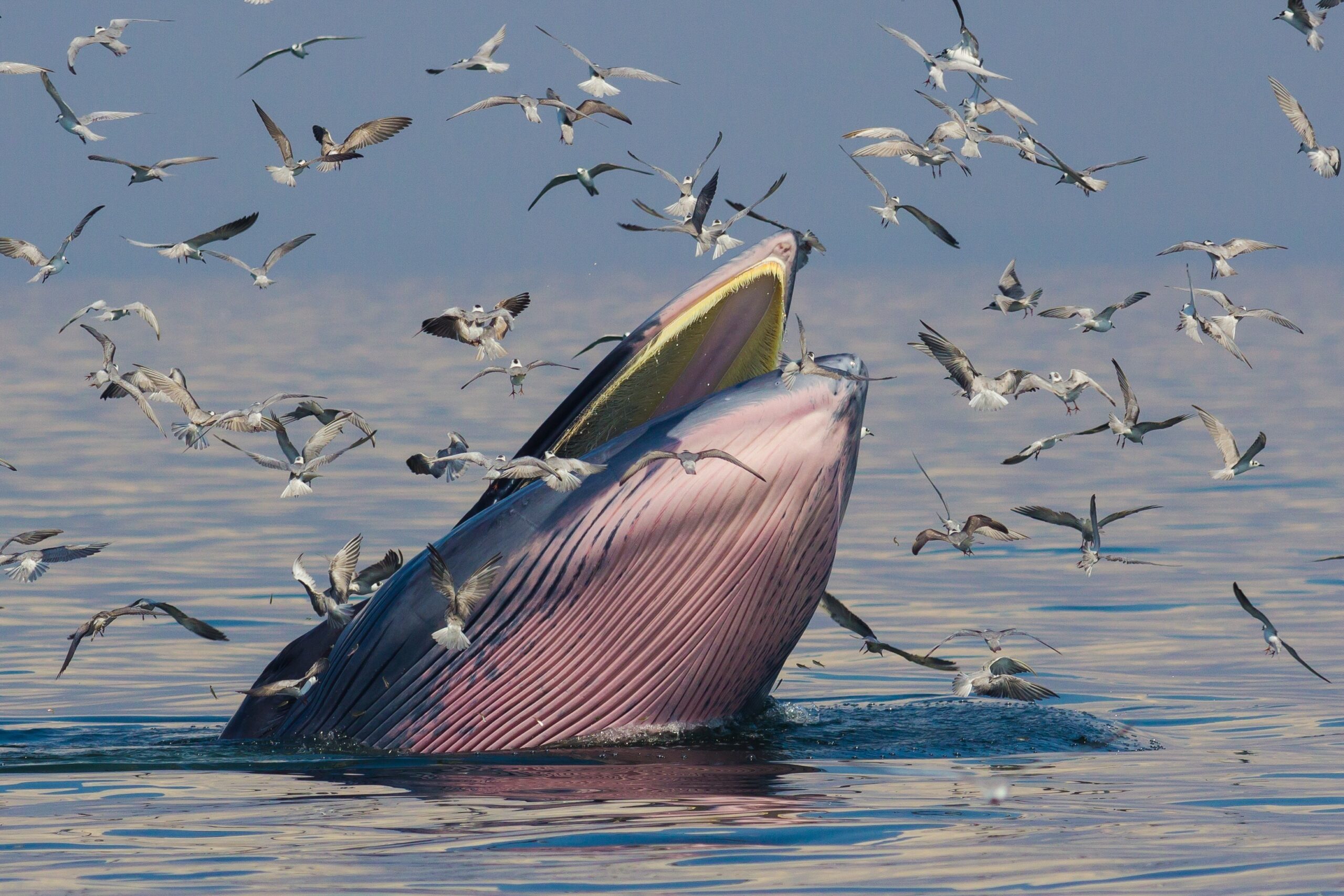
Bryde’s whales prefer warmer tropical waters. They are known for their sleek, streamlined bodies that allow them to swim quickly and dive deeply. Bryde’s whales have three ridges on top of their heads, making them unique among other baleen whales. They feed by lunging at schools of fish, scooping them up with their large mouths. These whales are agile and move gracefully through the ocean’s depths.
Dall’s Porpoise
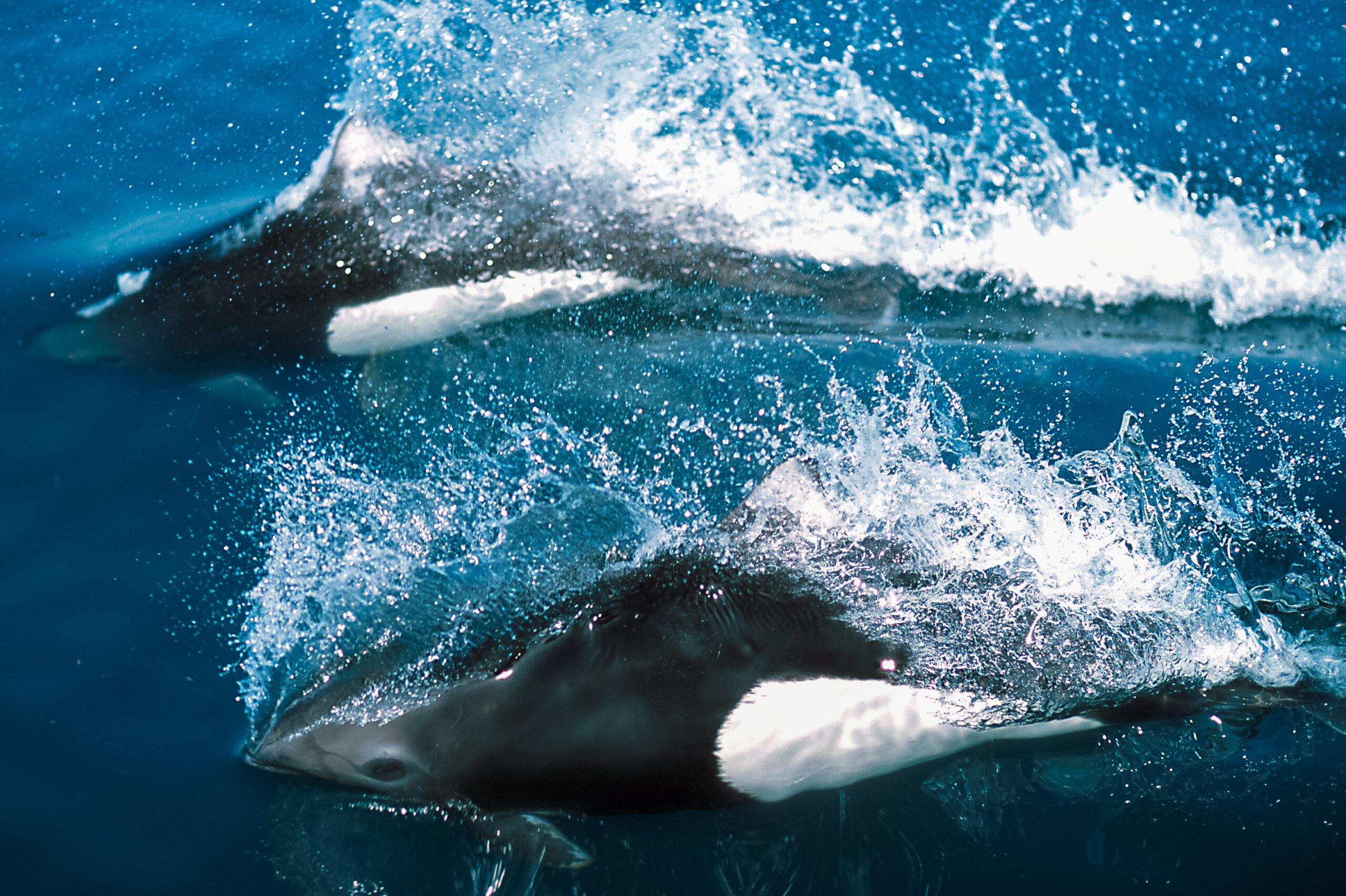
Dall’s porpoises are fast swimmers. They can reach speeds of up to 55 kilometers per hour, darting through the water like torpedoes. These porpoises have striking black and white coloring, similar to an orca. Dall’s porpoises often ride the bow waves of boats, leaping and splashing in playful bursts. Their agility and speed make them some of the most dynamic creatures in the ocean.
Harbor Porpoise
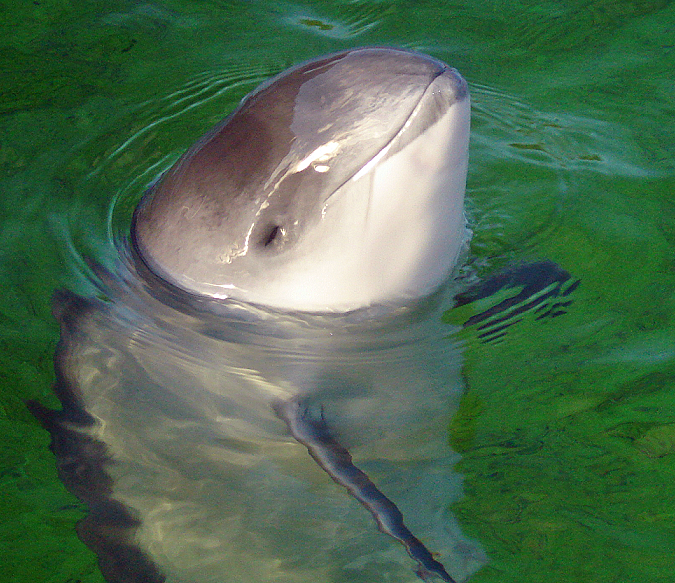
Harbor porpoises are shy and elusive, often staying close to coastal waters. They are small but move quickly through the water with short, sharp movements. Their small dorsal fins and rounded bodies help them navigate through narrow, shallow waters. Harbor porpoises are quiet, rarely breaching or showing their tails. Despite their small size, they are skilled hunters of fish and squid.
Vaquita
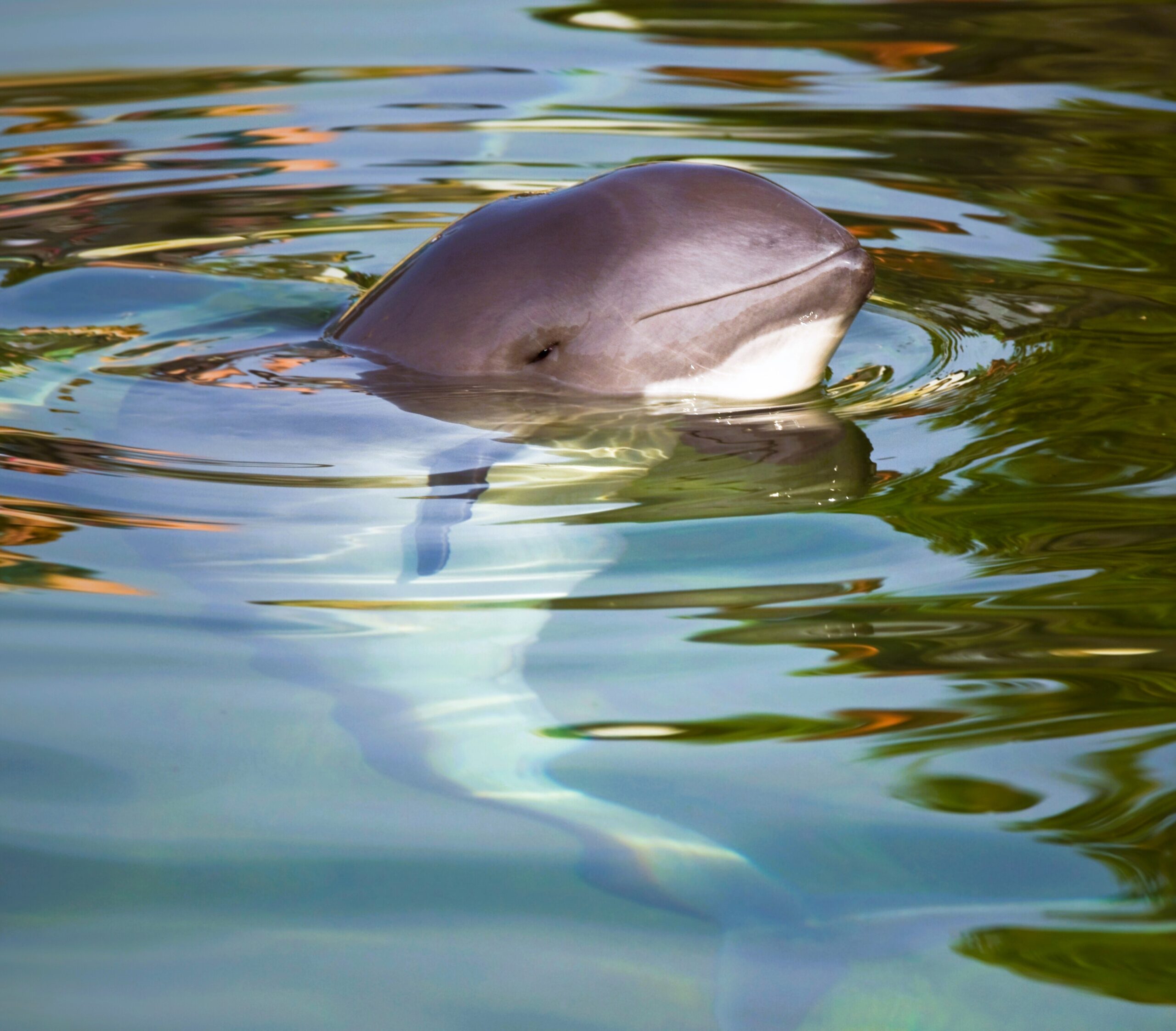
The vaquita is one of the rarest marine mammals in the world. It lives in the Gulf of California, with fewer than 20 individuals remaining. Vaquitas are small, with a rounded body and dark eye patches. They glide quietly through shallow waters, avoiding human interaction. Their movements are smooth and efficient, though they are rarely seen due to their elusive nature.
Indo-Pacific Humpback Dolphin
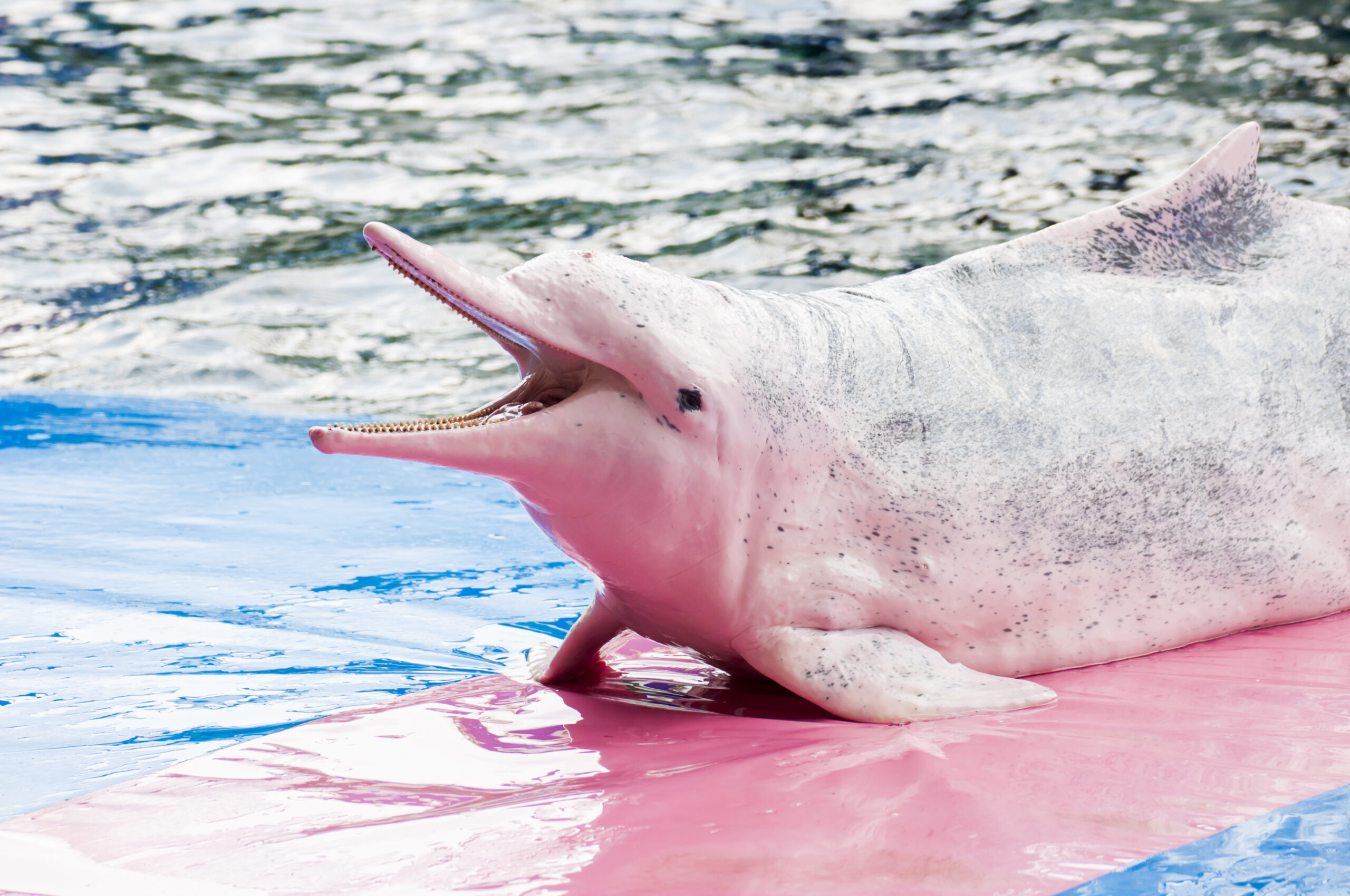
The Indo-Pacific humpback dolphin is known for its unique, slightly humped back and slender body. Its color changes as it ages, starting from gray and often turning pink or white in older individuals. These dolphins are often found in shallow coastal waters, where they glide smoothly between mangroves and estuaries. Their agility helps them navigate tight spaces while hunting for fish. They are also known for their playful behavior, often breaching and splashing in shallow water.
Spinner Dolphin
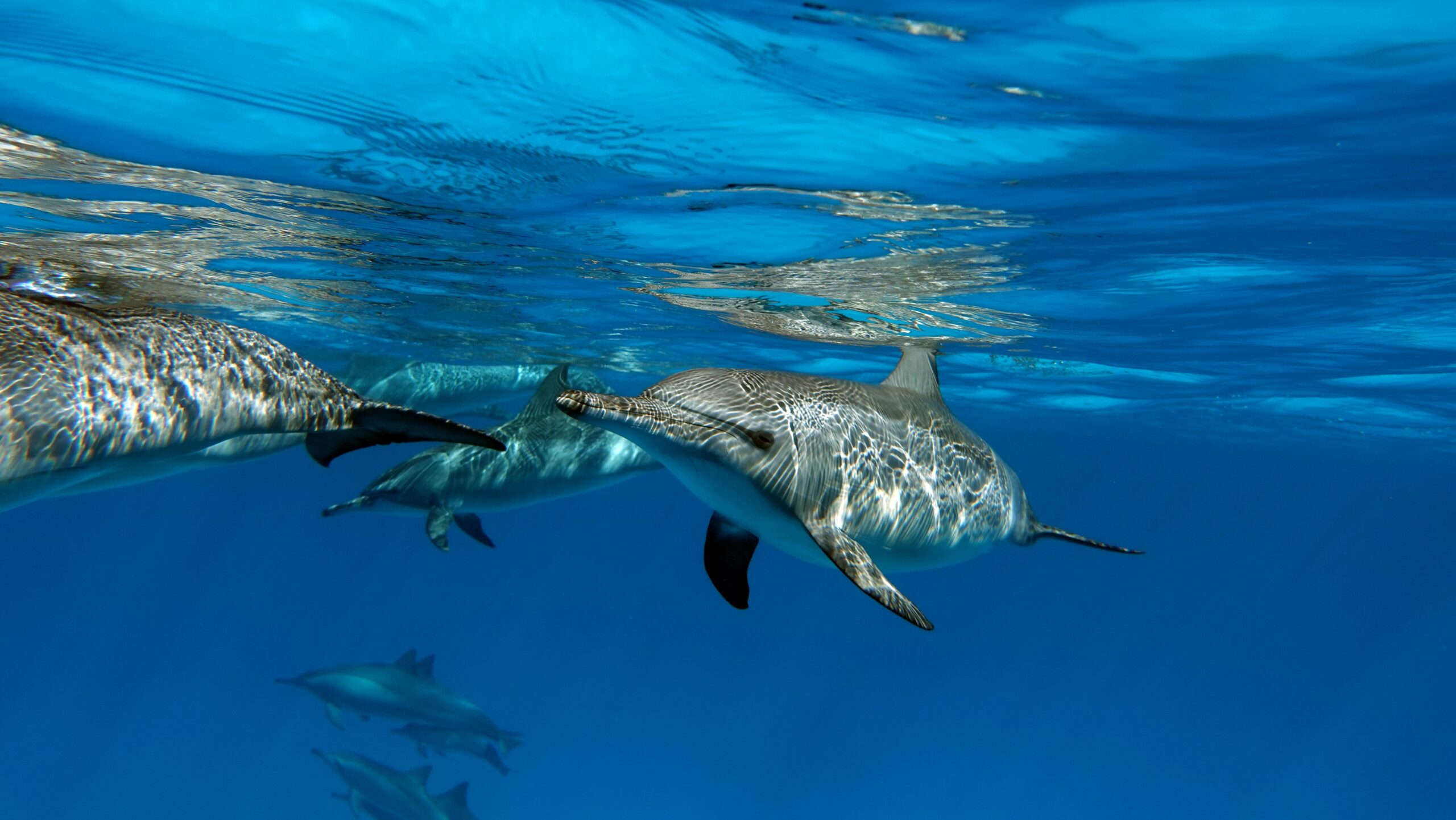
Spinner dolphins are famous for their acrobatic spins and jumps. They leap high out of the water, twisting their bodies mid-air in a graceful spin. These dolphins often travel in large pods, displaying their playful energy in synchronized leaps. Spinner dolphins are fast swimmers, using their sleek bodies to glide effortlessly through warm tropical waters. Their social nature makes them one of the most engaging marine mammals to observe in the wild.
Common Bottlenose Dolphin
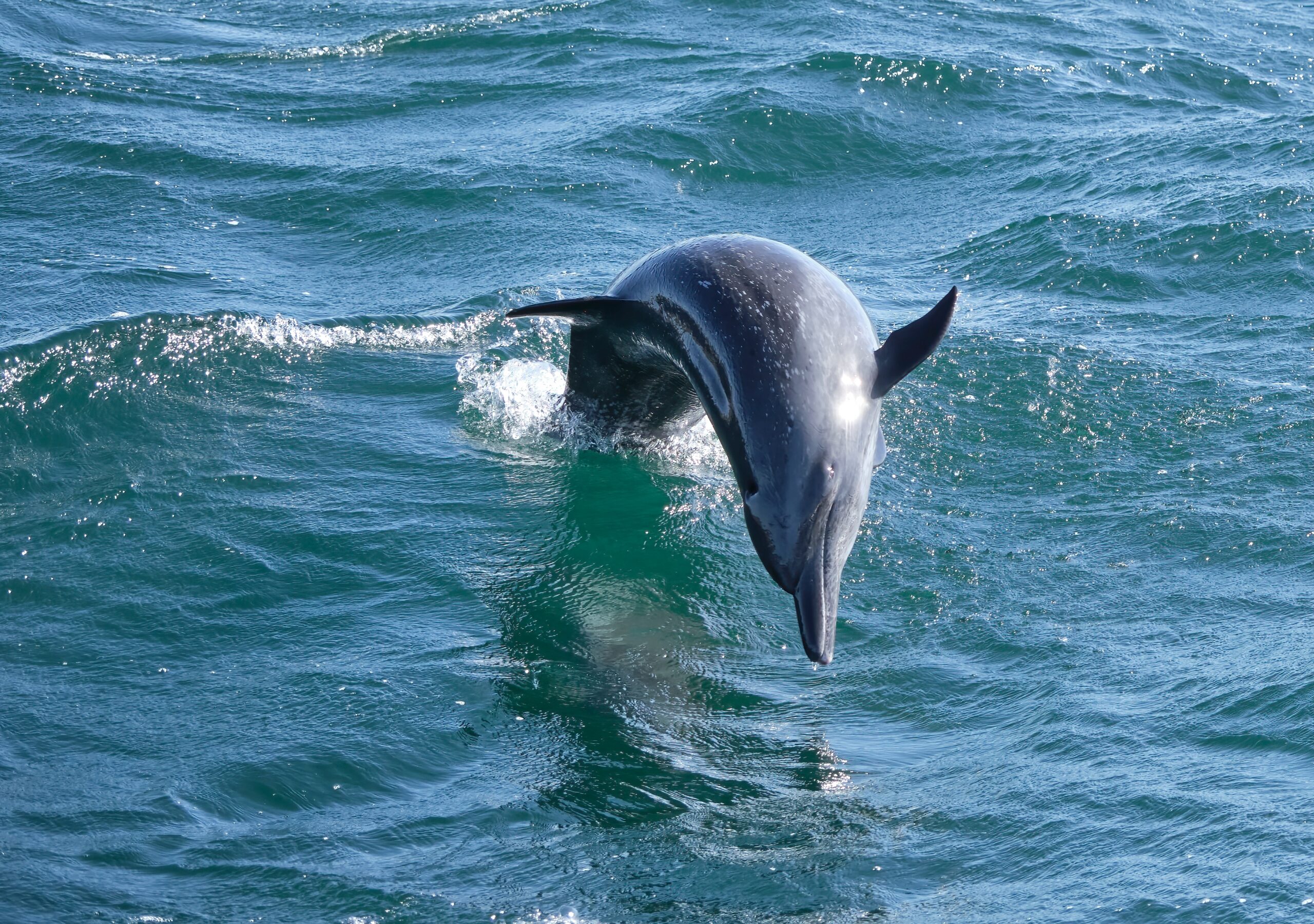
The common bottlenose dolphin is one of the most well-known dolphin species. Its strong, streamlined body allows it to glide through the water with precision. Bottlenose dolphins are highly intelligent, using echolocation to navigate and hunt fish. They often travel in social groups called pods, where they communicate through a series of clicks and whistles. Their friendly behavior and frequent interaction with humans make them popular in both the wild and marine conservation centers.
Atlantic Spotted Dolphin
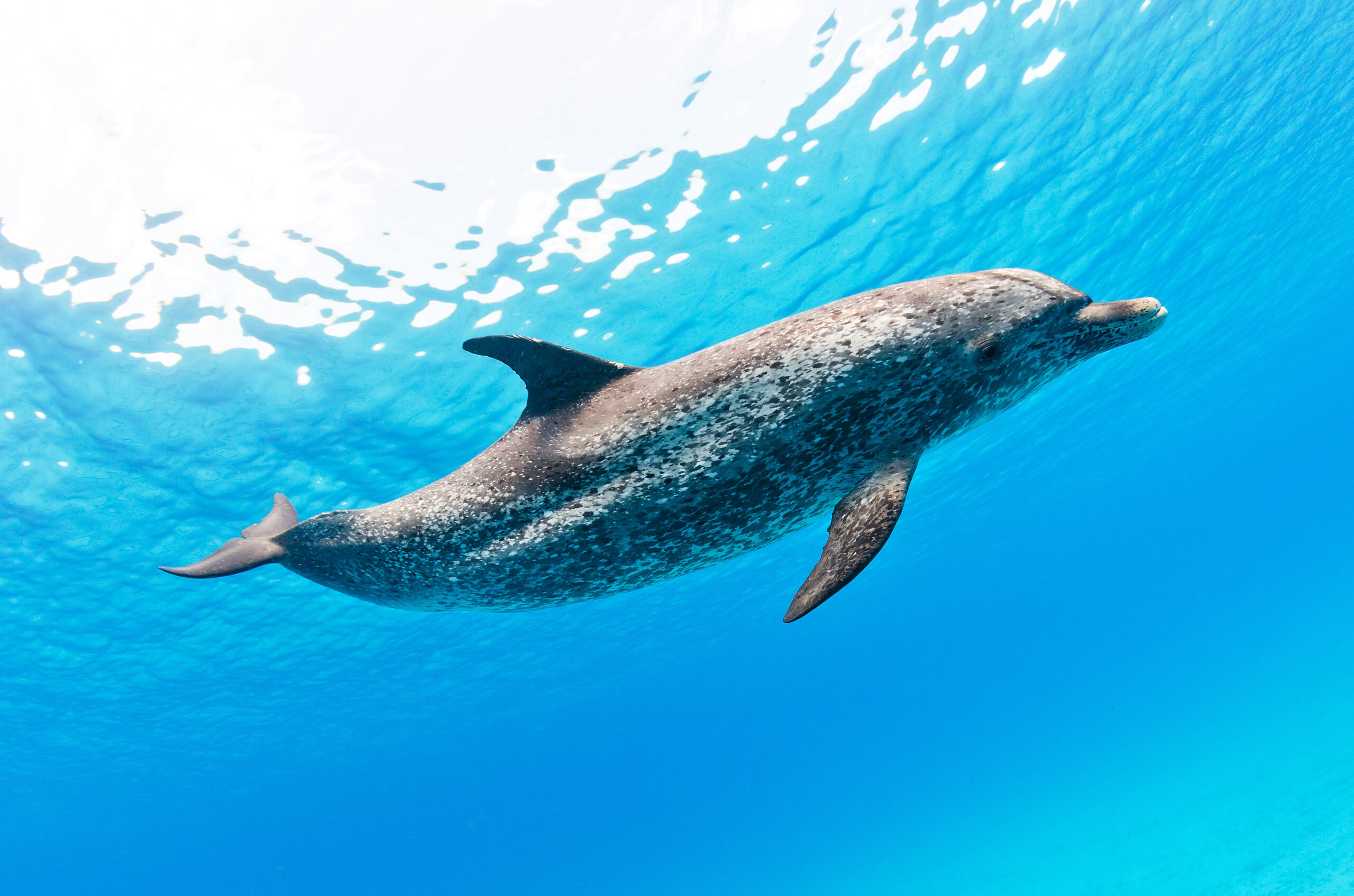
The Atlantic spotted dolphin is easy to recognize due to its distinct spots, which increase with age. These dolphins are quick and agile swimmers, often seen riding the waves near boats. Atlantic spotted dolphins are very social, traveling in pods that can include dozens of individuals. They often leap out of the water, showcasing their playful nature. Their spotted patterns make them a striking sight as they glide effortlessly through the Atlantic waters.
This article originally appeared on Rarest.org.
More from Rarest.org
17 Coveted Fine China Brands for Elegant Dining
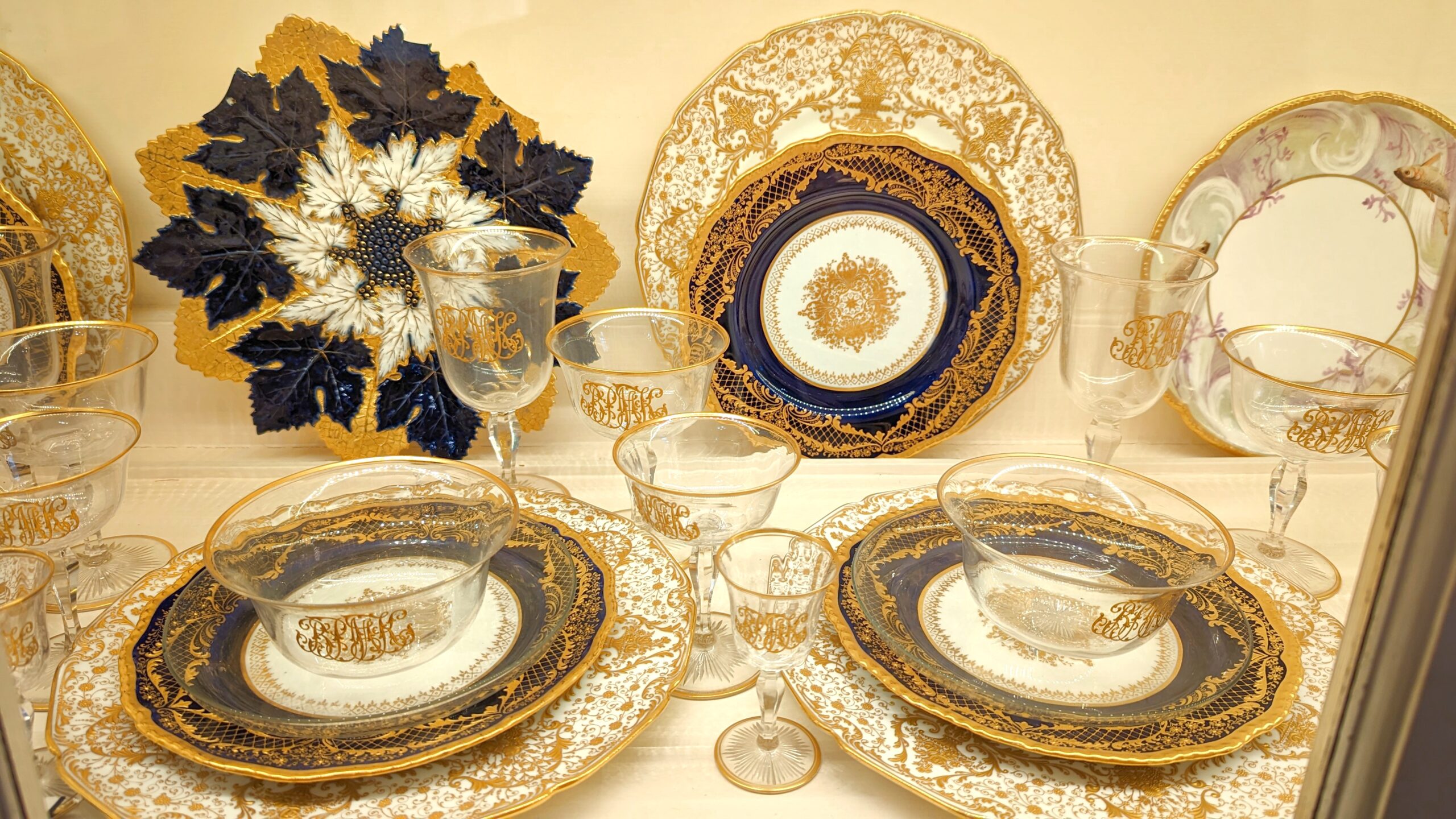
Fine china is more than just tableware; it’s a symbol of elegance and timeless beauty. When it comes to dining, choosing the right brand can elevate any occasion. Read More.
13 Coveted Antique Glassware That Fetches Top Dollar

Tiffany Favrile Glass is renowned for its iridescent finish. Each piece is hand-blown, showcasing vibrant colors that shift in the light. Read More.
20 Endangered Animals Pushed to the Brink by Habitat Loss
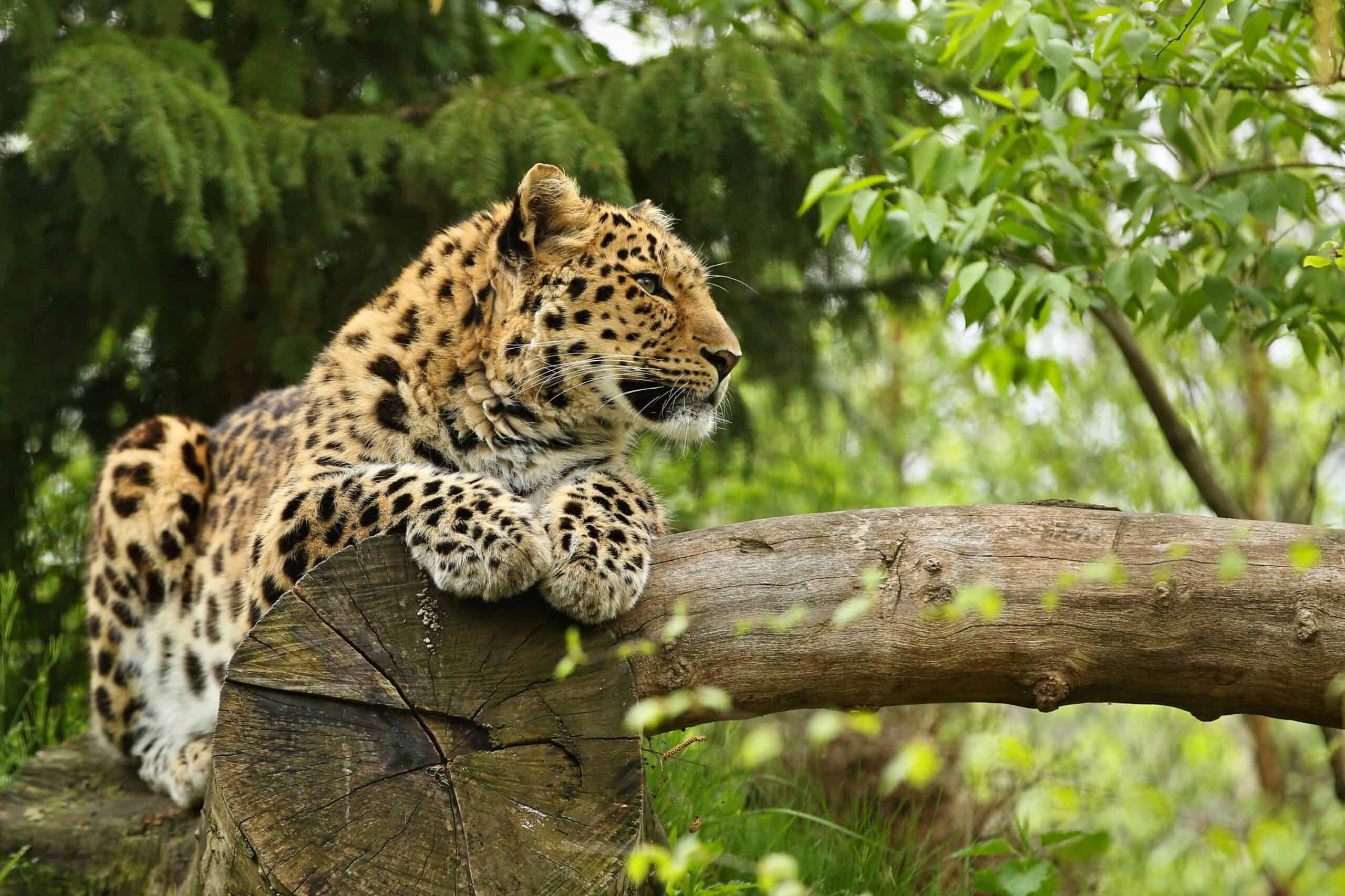
Many species are being pushed to the edge of extinction, with habitat loss playing a critical role in their decline. Read More.
